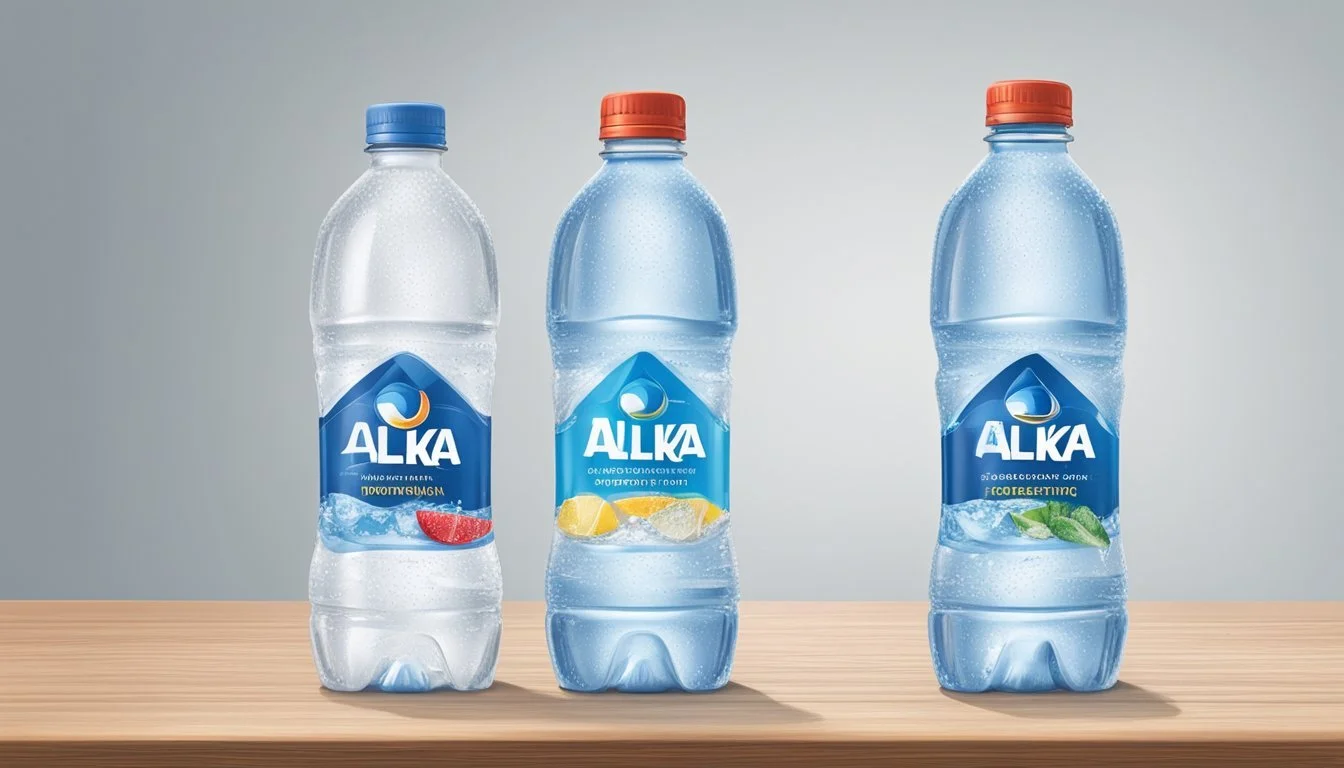Arrowhead vs. Tru Alka
Comparing the Best Bottled Water
When it comes to choosing bottled water, consumers often face the challenge of selecting the best brand for their taste and health preferences. Arrowhead and Tru Alka are two popular options in the market today, each with unique features that appeal to different types of water drinkers. Understanding the differences between these brands can help you make an informed choice that suits your needs.
Arrowhead offers natural spring water sourced directly from mountain springs, providing a refreshingly crisp taste. On the other hand, Tru Alka focuses on delivering alkaline water with a higher pH level, aiming to balance the natural acidity in the body and potentially offering various health benefits. For those prioritizing the pure and natural taste of spring water, Arrowhead may be the better option, while health-conscious individuals seeking alkaline properties might prefer Tru Alka.
Both brands have their loyal followers and distinct selling points. By examining the specifics such as source, taste, and health benefits, this comparison aims to clarify which bottled water might be more suitable based on your personal preferences and lifestyle. Understanding these key factors can make your decision easier and more tailored to your needs.
Understanding Bottled Water
Bottled water is available in various types, each offering distinct characteristics based on its source and treatment process. Understanding these differences can help consumers make informed decisions about their bottled water choices.
The Basics of Bottled Water
Bottled water is packaged drinking water sourced from various places. These sources include natural springs, wells, and municipal supplies. The water undergoes several processes to ensure safety and enhance taste. Key among these processes are filtration, reverse osmosis, and the addition of essential minerals.
Different regions have varying regulations for bottled water standards. These standards ensure that the water is free from harmful contaminants and fit for consumption. It's essential to check the label to understand where the water comes from and the processes it has undergone.
Types of Bottled Water
Spring Water: This type of water comes from an underground formation and flows naturally to the surface. Spring water retains minerals present at the source, often giving it a unique taste. Natural spring water is sought-after for its purity and mineral content.
Purified Water: Purified water undergoes extensive filtration to remove contaminants. Methods like reverse osmosis and deionization are common. Purified water typically lacks the natural minerals found in spring water, but it is clean and safe to drink.
Mineral Water: Sourced from mineral springs, this bottled water is rich in dissolved minerals such as calcium, magnesium, and potassium. The mineral content must be consistent to be marketed as mineral water.
Distilled Water: Produced by boiling water and then condensing the steam, distilled water is free from dissolved minerals and contaminants. While it is highly purified, it often lacks the natural taste associated with richer mineral content waters.
Comparing Arrowhead and Tru Alka
This section provides a detailed comparison between Arrowhead and Tru Alka bottled waters, highlighting important aspects such as brand history, source origins, and their respective production and purification processes.
Brand Overview: Arrowhead
Arrowhead is a well-known bottled water brand originating from California. It sources its water from multiple natural springs primarily located in the San Bernardino Mountains. Known for its crisp taste, Arrowhead Mountain Spring Water has been a staple in many households for decades. As part of Nestlé Waters, Arrowhead focuses on delivering quality drinking water through sustainable practices, leveraging natural filtration from the environment.
Brand Overview: Tru Alka
Tru Alka markets itself as an alkaline water brand with a unique focus on balancing pH levels in the body. This brand emphasizes its water's purity and health benefits, claiming to offer enhanced hydration. Tru Alka goes through a rigorous purification process and adds essential minerals to maintain a stable pH. It's aimed at health-conscious consumers who seek water products beyond basic hydration.
Source and Origin
Arrowhead gets its water from multiple natural springs. Most of these springs are situated in the San Bernardino Mountains. It taps into Arrowhead Springs, a source known for its pure and fresh quality. This gives Arrowhead water its distinct taste derived from natural mineral content.
Tru Alka, on the other hand, sources its water from various locations, ensuring it starts with high-quality drinking water. The focus is less on a singular natural spring and more on the ability to provide consistent alkaline water with precise pH levels, regardless of origin.
Production and Purification Process
Arrowhead water is naturally filtered through layers of rock and sand found in its spring sources. It then undergoes additional filtration to ensure purity and safety for consumption. This natural and secondary filtration method helps maintain the mineral-rich profile of Arrowhead Mountain Spring Water, contributing to its fresh taste.
Tru Alka employs a multi-stage purification process. This includes micro-filtration, reverse osmosis, and ultraviolet exposure to eliminate impurities. Following this, essential electrolytes are infused, and the water is ionized to achieve a stable alkaline pH, often around 9.5. This complex process ensures Tru Alka water is free from contaminants while maintaining its advertised health benefits.
Health and Hydration
When comparing Arrowhead and Tru Alka bottled waters, it's essential to examine their mineral content, pH levels, and hydration effectiveness. These factors can significantly influence the overall health benefits and hydration capabilities of the waters.
Minerals and Electrolytes
Minerals and electrolytes like potassium, magnesium, and calcium play a crucial role in maintaining bodily functions. Arrowhead bottled water contains trace amounts of these essential minerals, which can support bone health, muscle function, and fluid balance.
In contrast, Tru Alka is marketed as a premium alkaline water, often enriched with added electrolytes. This enriched composition can provide better support for electrolyte balance, especially beneficial after exercise or in hot weather conditions. The presence of key electrolytes can aid in faster rehydration and muscle recovery.
While both waters contain beneficial minerals, Tru Alka's enriched electrolyte profile may offer an added advantage, particularly for those with higher hydration needs due to physical activity.
pH Levels and Alkalinity
pH levels can influence the alkalinity and acidity of the water, which some consumers believe affects health and hydration. Arrowhead water typically possesses a neutral pH, hovering around 7.0, making it a balanced option for daily consumption without significant impact on body's pH levels.
Tru Alka, on the other hand, emphasizes its alkaline properties, boasting a pH level above 8.0. This high alkalinity is often associated with potential benefits like helping neutralize acidity in the body and providing a smoother taste. However, scientific evidence supporting significant health benefits of alkaline water over regular water remains inconclusive.
For those seeking an alkaline option specifically for its touted benefits, Tru Alka offers a higher pH level compared to Arrowhead's neutral pH.
Hydration Effectiveness
Hydration effectiveness is largely determined by the water's ability to be absorbed by the body efficiently. Both Arrowhead and Tru Alka waters are effective for hydration, but their compositions offer different potential benefits.
Arrowhead provides natural spring water that maintains hydration with a neutral taste, suitable for everyday use. Its mineral content, while not excessive, aids in maintaining general hydration needs.
Tru Alka's high pH and added electrolytes may enhance hydration, particularly post-exercise or in heat. The added electrolytes help replenish lost minerals and maintain better fluid balance, which can be particularly useful for athletes or active individuals.
Choosing between these waters often depends on individual hydration needs and preference for mineral content and alkalinity.
Taste Profile Comparison
This section will detail how Arrowhead and Tru Alka differ in taste, focusing on the factors that influence their flavors and what consumers generally prefer.
Factors Influencing Taste
The taste of bottled water is shaped by several elements, including the source of the water and any added minerals.
Arrowhead sources its water from mountain springs in the Western U.S. and Canada. The natural minerals in these spring waters contribute to a subtle mineral flavor that some consumers find refreshing.
Tru Alka, on the other hand, is alkaline water with minerals added to enhance taste and health benefits. Its purification process eliminates impurities, giving it a clean, crisp flavor that is slightly sweetened by the added minerals.
Consumer Preferences
Consumer opinions on the taste of these waters vary, largely depending on individual preferences and the setting in which the water is consumed.
Many prefer Arrowhead for its natural, earthy taste and the feeling of drinking from a pristine source. The mineral flavor is mild but noticeable, appealing to those who enjoy a hint of natural earthiness.
Tru Alka is often preferred by those seeking a softer, smoother taste. The added minerals provide a subtle, pleasant sweetness, making it popular among consumers who favor a purer, cleaner flavor without any earthy undertone.
Both brands have their loyal followings, driven by distinct taste profiles and their unique approaches to water purification and mineral content.
Environmental and Health Considerations
Understanding the impact of bottled water on both the environment and health is crucial. Important factors include the materials used for the bottles, the presence of chemicals such as BPA, and the overall environmental footprint of the production and disposal processes.
Bottle Materials and BPA
Arrowhead and Tru Alka use different materials for their bottles, with significant implications for health and safety. Arrowhead typically uses PET plastic, which may contain Bisphenol A (BPA), a chemical linked to various health risks. However, many brands now use BPA-free plastic to address these concerns.
Tru Alka often uses glass bottles, which are not only BPA-free but also do not leach harmful substances into the water. Glass is also recyclable and less likely to degrade over time, making it a healthier choice. The use of glass bottles aligns with environmentally friendly practices, though it can increase production costs.
Environmental Footprint
The environmental footprint of bottled water includes not just the materials used but also the processes of manufacturing, transportation, and disposal. Arrowhead employs large-scale production and distribution networks, which can contribute to higher carbon emissions. Their bottles are primarily made of recyclable PET plastic, but recycling rates are inconsistent.
Tru Alka, by contrast, often uses glass, which has a lower environmental impact due to its reusability and recyclability. However, glass is heavier, leading to higher transportation emissions. Despite this, many consumers view glass as more eco-friendly due to its non-toxicity and durability.
Both brands should consider improving their practices to reduce their carbon footprint, such as using renewable energy sources and promoting recycling initiatives. Environmental friendliness is an essential aspect of modern consumer preference, and both Arrowhead and Tru Alka have opportunities to enhance their sustainability efforts.
Market and Consumer Choices
Both Arrowhead and Tru Alka have their distinct places in the bottled water market, appealing to various consumer preferences based on factors such as availability, price, and how they compare to other notable water brands.
Availability and Price Comparison
Arrowhead is widely available across the United States, commonly found in grocery stores, convenience stores, and major retailers. Its price point is relatively inexpensive compared to premium brands like Fiji Water or Voss, making it a popular choice for budget-conscious consumers.
Tru Alka, on the other hand, is sometimes harder to find, primarily available in health food stores or specialty retailers. As a premium alkaline water, its cost is generally higher than more accessible brands such as Aquafina or Pure Life. This limits its reach to consumers willing to invest more in their hydration choices.
Comparing to Other Brands
When assessing Arrowhead against other brands, it is essential to note its middle-ground standing. It's often rated above common bottled waters like Dasani and Nestlé Pure Life for its source from natural springs, but it doesn't quite reach the high-end appeal of Icelandic Glacial or Evian.
Tru Alka, recognized for its alkaline properties, finds its competition among brands like Essentia and Core Hydration, which also emphasize pH balance. Its unique selling point of natural minerals and electrolytes positions it favorably in health-focused markets, contrasting with conventional options such as Poland Spring and Deer Park.
By examining consumer choices, the distinctions between Arrowhead and Tru Alka highlight their respective niches in the vast landscape of bottled water brands.
Legislation and Standards
Bottled water safety and quality are governed by a range of regulations and certifications aimed at ensuring consumer health. Understanding these regulatory frameworks can help consumers make informed choices.
United States EPA Regulations
In the U.S., the Environmental Protection Agency (EPA) sets standards for drinking water safety. These regulations apply to municipal water supplies and include limits on contaminants such as lead and arsenic.
Although the EPA does not directly regulate bottled water, the FDA adopts EPA standards for bottled water. This includes maximum contaminant levels for substances like nitrates and heavy metals.
EPA's regulations ensure bottled water companies meet stringent safety standards, offering peace of mind to consumers.
Bottled Water Certifications
Certification programs like NSF International and the International Bottled Water Association (IBWA) provide additional layers of assurance. NSF International tests for contaminants and requires facilities to undergo annual audits.
The IBWA mandates member companies comply with a strict code of practice, covering everything from source water protection to bottling processes.
Certification labels on bottled water can indicate adherence to higher standards, beyond basic legal requirements. Consumers should look for these labels to ensure the highest quality and safety in their bottled water choices.
Closing Thoughts
When comparing Arrowhead and Tru Alka, it's essential to consider various factors that impact consumer preference.
Arrowhead is a prominent name in the bottled water industry, known for sourcing water from springs in the San Bernardino Mountains. Despite recent rulings against the company, its product remains widely available and trusted by many for its crisp taste and natural spring source.
Tru Alka, on the other hand, offers alkaline water with a pH of 9.5 or higher, known for its purity and added electrolytes. This makes it appealing for those seeking health benefits, making it a popular choice among athletes and health enthusiasts.
Criteria Arrowhead Tru Alka Source Natural Springs Purified and Alkalinized pH Level Neutral 9.5+ Taste Crisp, Clean Smooth, Alkaline Additives None Electrolytes Availability Widely Available Select Locations
Both brands have their unique advantages. Some consumers prefer the natural spring water of Arrowhead, while others lean towards the enhanced properties of Tru Alka.
When choosing between these two brands, personal preference for taste, source, and additional benefits provided by alkaline water should guide the decision. Each offers a distinct experience, catering to different needs and lifestyles.






